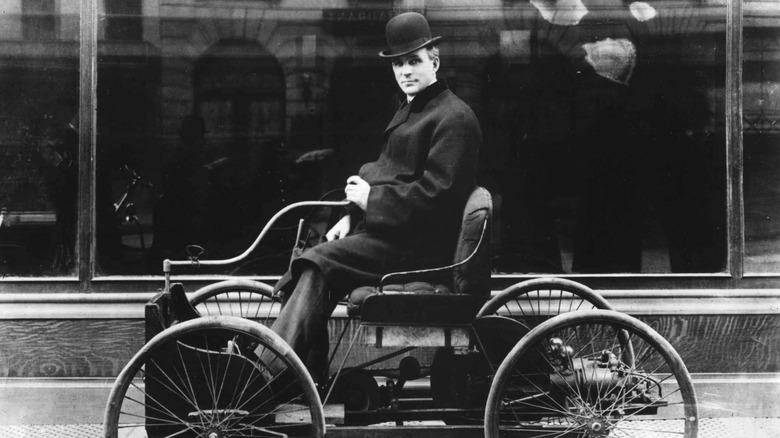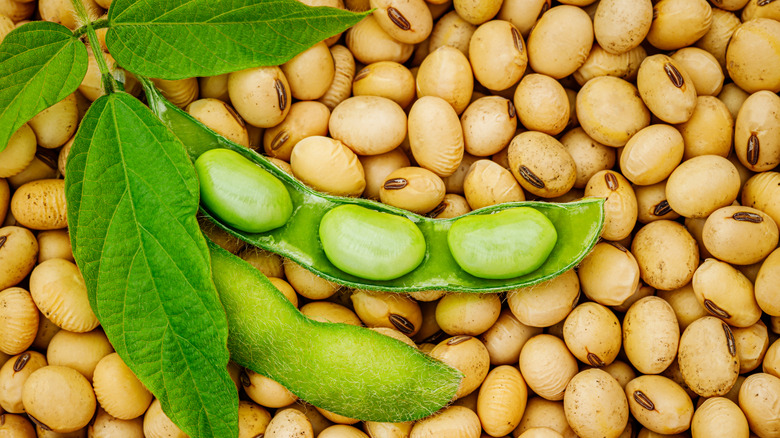How Henry Ford Helped Soy Milk Go Mainstream
Whether you've accepted it or not, soy and other plant-based milk alternatives have infiltrated the culture — and they're not leaving the supermarket's dairy fridge anytime soon. What was initially viewed as a one-off trend now accounts for 10% of the entire milk market (via Food Manufacturing), with more varieties than anyone could have ever imagined. From almond to oat, coconut to macadamia, there's a suitable substitute for everyone. But not long ago, before the alt-milk movement took off, vegans and those with lactose intolerance only had one option: soy milk.
In many ways, soy milk was the dairy alternative that started it all. At its peak in 2008, per VICE, soy milk opened people's minds and challenged a culture that normalized the consumption of animal products — even more so than it does today. It's no coincidence that Henry Ford, one of the most influential industrialists in history, who shaped American culture forever by popularizing the automobile (via The Henry Ford blog), also had his hand in the future of soy milk.
Henry Ford's soy-based vision
According to Serious Eats, Henry Ford was one of soy milk's most dedicated boosters. His vision for the future of soy encompassed more than just cow-less milk; he imagined it being useful in making soy-based oils and plastics, which he would use in the cars he developed, per The Henry Ford blog. Through soy, Ford imagined a world where industry and agriculture would complement one another — seeing it as a way to support America's farmers in the midst of the Great Depression, according to the Soy Info Center.
For milk, Ford believed soybeans would improve a product made from what he considered "the crudest machine in the world" — aka cows (per Serious Eats). He thought it was simpler to "take the same cereals that the cows eat and make them into a milk which is superior to the natural article and much cleaner." According to Soy Info Center, this idea was met with laughter and disbelief. Nevertheless, in the 1930s, he opened a soy milk demonstration plant in Michigan and used his hundreds of acres of soybean fields to produce several hundred gallons of soy milk daily. In 1934, his soy creations made headlines at the Chicago World's Fair.
Ford frequently invited others to sample it, and though his Filipino employees particularly liked it flavored with banana oil, he personally liked it sweetened with maple syrup, sorghum syrup, or imported honey.

